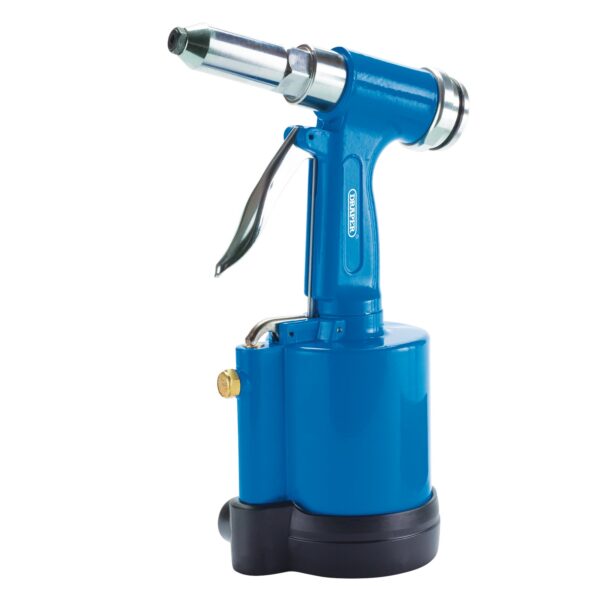Air riveters are important tools, boasting both versatility and practicality. They are real testaments to ingenuity of humans in the mechanical and manufacturing processes. Also called pneumatic riveter guns, they use compressed air and transform it to a strong force, which drives the equipment into a range of materials. The main role of air riveter guns is to create durable and strong bonds where a conventional technique, like using screws or welding, might not be effective or feasible.
Working Principle of an Air Riveter Gun
You will need a riveter to perform riveting processes. A riveter is often driven through drilled holes of adjoining surfaces, and then deform or buck one end to lock those surfaces into place. In assembly of sheet materials, you will need an air riveter to join them together so as to form fuselage or airframe. This makes the process of riveting important for ensuring the airframe can withstand extreme torsion stresses, compression, and tension. Quality of riveting depends on three major things. These include squeeze force from a riveter, quality of hole through which your gun goes, and the machine itself.
Common Applications
The high impact delivery and heavy-duty construction makes air riveters widely used in various industrial environments so as to securely fasten hard and thick materials. For instance, automotive relies on air riveters to assemble auto parts. Automakers use both cosmetic and structural parts of the gun to piece together unibody frames of vehicles. Apart from automotive, other applications include:
- Construction
- Aircraft manufacturing
Components of the System
An air riveter gun mainly has two components. These components include pneumatic hose and compressed source of air. Pneumatic hose is made of plastics, like PA (polyamide), PE (polyethylene), and PU (polyurethane). PU is durable, kink resistant, and flexible. PE is often used for a low pressure pneumatic, while PA is light and strong, but less flexible compared to PU and PE. To operate compressed-air driven tools, you will need enough supply of air. Therefore, a compressor is a very important part of pneumatic tool kits that helps to supply air. Many air riveters use 4-5 cubic feet per minute of compressed air at 6.2 bar when used continuously.
Benefits
Compared to manual riveter guns, air riveters comes with many benefits. And depending on various applications, they are preferable to battery-powered and cordless riveters. These benefits include the following:
1. Quality Riveting
These riveters deliver precision attachments all the time, with minimal effort. The risks of making mistakes are low than when using manual riveters.
2. Ease of Use
A pneumatic gun often follows simple processes to attach a rivet. This enable users to put multiple rivets within a short time, without applying any physical stress on their own hands.
3. Lightweight Construction
Unlike other riveters, a modern handheld gun will not wear out your hands.
4. No Need to Recharge the Source of Power
Unlike a cordless riveter, you have nothing to be worried about replacing batteries or running out of charge.
The bottom line is that, an air riveter gun is an invaluable tool in assembly processes and modern manufacturing. Their reliability, versatility, and efficient operations makes the tool a more preferred option for experts across different industries, including aircraft manufacturing, automotive, and construction.
